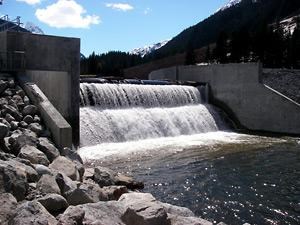BC’s government has issued over two dozen investigative licences to Alterra Power Corporation for waterpower projects.
The province has offered the company 20 investigative licences for projects in the Bute Inlet area and five in the Toba Inlet area.
The purpose of the licence is to carry out investigative work including stream gauging and hydrometric studies for waterpower projects. The tenure for the licences is five years and they were all offered toward the end of 2012 and beginning of 2013.
The licences were issued to three different companies, all part of Plutonic Power Corporation, which merged with Magma Energy Corporation in 2011 to form Alterra. The original applications were filed from 2004 to 2013.
The licences in Bute include: Brew Creek; Icewall Creek; Raleigh Creek; Southgate River 1; Southgate River 2; Southgate River 3; Whitemantle Creek; Caravel Creek; Allaire Creek; Paradise River; Gargoyle Creek; Heakamie River; Coola Creek; Jewakwa River; Scar Creek; Algard Creek; Tributary to Orford River (north); East Orford River; Elliot Neighbour Creek; and Mellersh Creek.
In Toba, the licences are for: Upper East Toba River, Sirenia Mountain; Zoltan Creek; Racoon Creek; Tahumming River; and Chusan Creek.
As well, a licence has been awarded to Tees’Kwat Land Holdings Ltd. for Freda Creek. Plutonic had applied for the licence in January 2006, but subsequently the City of Powell River and Tla’amin (Sliammon) First Nation have formed a partnership to develop the project.
Vivian Thomas, a spokesperson for the ministry of forests, lands and natural resource operations, said the investigative licence is a new requirement for waterpower projects, which ensures that an application remains active, continues to move forward and is not used for the sole purpose of staking a claim. “It also ensures that all clean energy applicants continue to investigate their projects in good faith while their applications are under review,” she wrote in an email to the Peak. “The province changed the process to ensure that only serious applications were moving through the process. Province-wide, there are close to 600 applications, but only about 100 moving forward at a reasonable pace.”
Government also introduced the requirement for an investigative licence to be consistent with requirements for other types of clean energy projects, Thomas wrote. “Both wind and ocean clean energy applications require an investigative licence,” she explained. “Waterpower projects require both licences under the Water Act and licences under the Land Act to proceed. The investigative licence being referred to is issued under the Land Act.”
Donald McInnes, executive vice-chairman of Alterra, said the licences allow a company to “explore your intellectual capital to see if it’s a good idea to try to build a hydroelectric plant on these water courses.”
Meanwhile, the Wilderness Committee has released an internal report compiled by the ministry which documents over 700 instances of non-compliance at 16 independent power projects operating in BC’s south coast region in 2010.
The report, which was obtained through a freedom-of-information request filed by the Wilderness Committee, highlights 313 incidents related to ramping, or fluctuating water levels that can kill fish, 292 cases of not notifying government officials of problems, 101 instances of not fulfilling mitigation requirements and 43 cases of not maintaining in-stream flow rates.
Alterra’s Montrose project had 46 instances of ramping non-compliance, but no fish kills were documented at either Montrose or East Toba.
McInnes, who is also on the board of directors of Clean Energy BC, pointed out the Wilderness Committee has said it is against the private sector participating in the power industry. “They’re doing everything they can to make this industry look bad,” he said.
Some of the non-compliance incidents are legitimate, McInnes said. “A lot of these things reflect operations at some plants that are very old and there were different standards those plants were built to,” he said. “The industry is working very hard with the federal and provincial regulators on learning about all the issues that there are around the operation of run-of-river plants and we’re working on developing better practices and best practices to overcome these things.”
However, some of the non-compliance reports are erroneous, McInnes said. He described how a build up of snow above a powerhouse can create an artificial dam that shuts down the water flow. “That has happened frequently at Toba-Montrose and I know that happens at other coastal projects,” he said. “We report this as a ramping violation, because that’s what our permit says we have to do, even though we had nothing to do with it.”



